Altitude Adventure – Chadar Trek Update
Are you planning to attempt the adventurous and beautiful Chadar Trek in Ladakh this winter season?
Are you planning to go Solo to the Chadar Trek?
Do you want to know the Chadar trek difficulty?
Here is a 7 point guide you need to know before you pack your bags and leave for Ladakh.

The Chadar Trek is a thrilling expedition over the frozen Zanskar river which lies deep in the formidable mountains of Ladakh, India. It is a trek of epic proportions taken under challenging weather conditions that see temperatures drop as low as -35C in the night. It is regarded as one of the most stunning and exhilarating winter treks across the world. The excursion includes walking on the frozen sheet of ice during the day and camping near the caves during the night.
The trail provides an excellent opportunity to explore the ancient culture of Zanskar, which is a blend of Tibetan and Indian cultures. In addition to this, a trekker can also spot some exotic wildlife species such as blue sheep and ibex that can be found in the frozen surroundings. Let’s have an in-depth exploration of the Chadar Trek and tips to carry out a successful expedition.
2. How Chadar Trek was discovered?
In the months from November to February, the district of Zanskar in Ladakh is almost entirely cut off from the main city of Leh leaving its inhabitants stranded with no road connectivity. The residents of Zanskar learned to tide over this challenge by using the only other way to move in and out, i.e by walking on the frozen Zanskar River. The Villagers learned to brave the sub-zero temperatures and challenging terrain to reach nearby Leh for their bare necessities, healthcare and other needs. This seasonal route came to be known as the Chadar as the frozen Zanskar river appears like a sheet (chadar) of ice.
When the adventure community discovered this traditional route they wanted to experience the same hardships and challenges which the locals braved and get to see some beautiful landscapes only possible to see in the extremely cold weather conditions. And thus the Chadar Trek was born. This trek is also popularly known as the Frozen River Trek. It is considered as one of the toughest treks in India.
3. Why should you go on the Chadar Trek?
In spite of the hardships, the Chadar Trek is definitely one of the treks you must try. Pick up any travel magazine and you will be able to see countless pictures of trekkers walking on a frozen river, under harsh conditions. This seemingly improbable scenario is the essence of the Chadar Trek.
The experience of walking on a frozen river is one of its kind. The trek is very picturesque and the frozen river provides an extremely serene and beautiful location with a peaceful atmosphere.
The real magic exists below your feet and you are unlikely to have seen anything quite as remarkable as this frozen river stretching far away out of sight. Watching the spell-binding panorama as you walk will give you memories that you will cherish forever.
This trek is undoubtedly a way to rejuvenate oneself and get relief from the hustle and bustle of daily life.
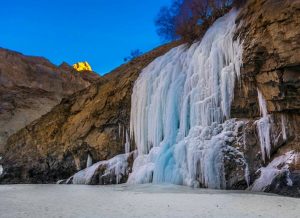
Success in this strenuous trek offers the trekkers a sense of satisfaction and exhilaration that can be compared to none. If you are an ardent adventurer and ready to encounter the harshest conditions then you cannot afford to miss the Frozen River Trek.
However, be prepared and keep in mind a few precautions before you embark on this arduous trek.
4. What are the difficulties that you may encounter?
Getting accustomed to the harsh climatic conditions is the major difficulty of the Chadar Trek. Secondly, Leh (starting point of the trek) is at an altitude of 11,300 feet above sea level so you need to be aware of Altitude Mountain Syndrome (AMS) and how to deal with it.
The trek is long and strenuous and it can cause exhaustion in some trekkers and thus, there is a need for high endurance and expertise.
Proper stamina and ability is something that you need to build up before venturing for the Chadar Trek.
Cardiovascular training at least 4 weeks prior to the trek is critically important. Training must also include strength and flexibility workout.
5. Important tips for the Chadar Trek
As the trek requires courage for facing the thrills, there are some certain do’s and don’ts that a trekker must consider. Below-mentioned is some of the dos and don’ts of Chadar Trek:
What to do on the Chadar Trek
- Inform your family or a close friend about your trek schedule along with the dates. This will be helpful if you need to be evacuated in case of an emergency. Give contact details about the trek organizer and if possible also of the group leader.
- Carry enough warm clothes and dress in layers. Temperature can plunge to as low as minus 35 C in the night. Know how to keep yourself warm on the Chadar Trek
- Carry your favorite (healthy) snacks with you as you may not like the local food and should not run out of energy due to lack of nutrition.
- On the first day of the trek, you learn to walk on the ice sheet and you tend to skid and fall often getting bruises and cuts. So get your first-aid kit and medicines with you.
What not to do on the Chadar Trek
- Do not litter wrappers, tissue papers or unwanted clothes anywhere and spoil the beauty of the route. The trail holds a gripping panorama and it is the responsibility of every trekker to maintain its beauty.
- Do not go to the toilets near the river. The local inhabitants use this water for drinking purposes; thus you should keep it clean. The same water is used for cooking purposes by your kitchen staff.
- Respect the tranquility of the zone and do not shout or play recorded music at high volumes.
- Never disregard the tips and guidelines provided by the guide during the trek.
- Never skip a meal. Afternoon meal provides you with high energy whereas dinner helps to provide sufficient warmth to your body at night.
- Do not forget to drink enough liquids in any form like water, tea or soups to deal with AMS.
- What are the major destinations covered in Chadar Trek?
The major destinations that fall on en route are:
- Tilat Sumdo – Tilat Sumdo acts as a campsite for Chadar Trek. ‘Sumdo’ literally means ‘the confluence’. At this point, there is a confluence of a small stream with the Zanskar river. There is a small stream meeting the Zanskar at this point. This spot where the confluence of the river takes place offers splendid panoramic views of the Himalayan Range.
- Gyalpo – A few kilometers away from Tilat Sumdo is Gyalpo campsite located at a bend of the Zanskar river. This region is rimmed by imposing peaks and trekkers can marvel at the surreal natural beauty here.
- Shingra Koma – Further 10 kilometers away from Tilat Sumdo is Shingra Koma. This is a scenic spot showcasing rustic beauty that simply spellbinds the travelers. This is a place with unsurpassed tranquility and mesmerizing scenery.
- Tibb – Tibb is a picturesque place offering a fascinating waterfall and cave. This Tibb cave is also used for overnight stay by the trekkers. The vistas of sun-kissed mountains from Tibb are an enchanting sight to witness
- Nerak – Nerak serves as an endpoint for the 9-day trek. It is a major base camp for many trekkers. The largest frozen waterfall (approx 5o feet) is also near Nerak. If you climb up to Nerak Village you get a see a beautiful mountain village nestled in snowy mountains. As you climb up to the monastery the entire view so gripping that an avid adventurer cannot afford to miss it. This entire region is sheer bliss for a nature lover’s eyes.
- What is the best time for Chadar Trek?
The best for Chadar trek is in the winter months of January and February. The Zanskar river starts freezing from December onwards and by the middle of January, it is completely frozen and remains so this end of February.
Typically, the first week of January to end-February is when most groups carry out trekking in the Chadar Trek.
The trek is certainly not easy, but if you are enthusiastic enough, and take certain caution then this a must-do once in a lifetime experience.
The fame associated with this trek can be gauged by the fact that films have been made on the Chadar Trek by the coveted National Geographic and Discovery Channels.
People coming from the trek also have numerous stories to narrate their incredible challenges and how they returned successfully by overcoming them.
Altitude Adventure is one of the best Chadar trek organizers in India.
Have Questions? Get answers to all your queries instantly. Message Us by clicking on the Whatsapp icon.
Call us at 91-8879607899
Meet us in Leh at Altitude Adventure, Fort Road, Ladakh -194104
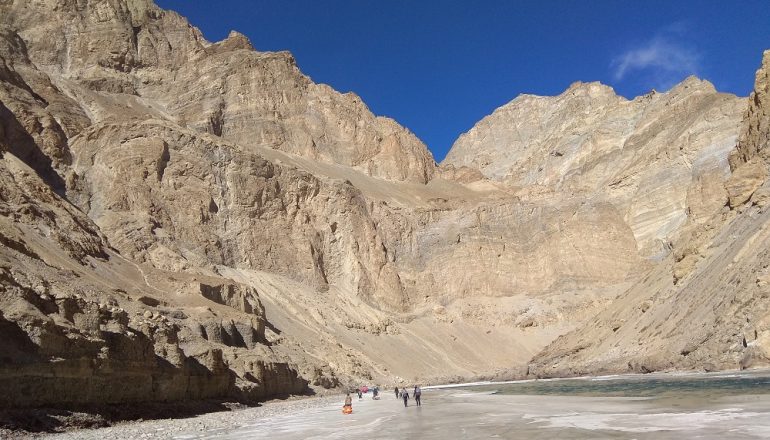
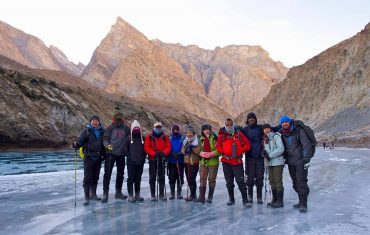
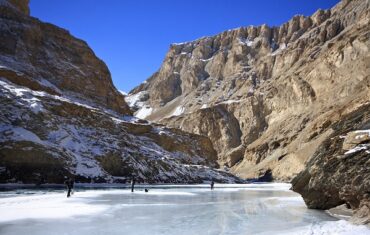
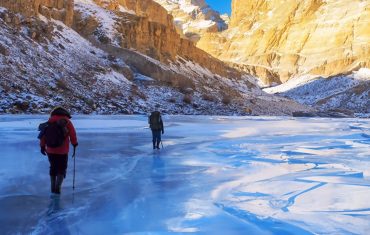
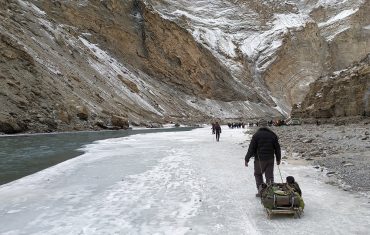
 WhatsApp Us
WhatsApp Us